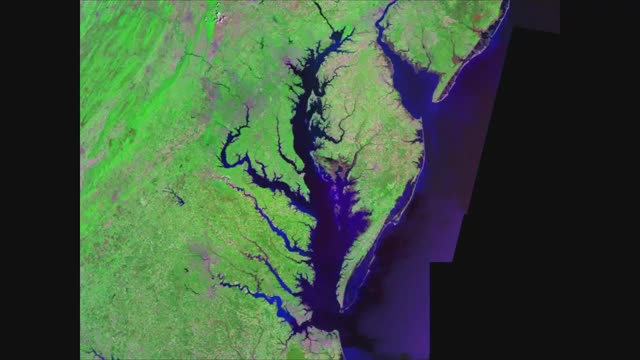Chesapeake Bay's Ancient Landscape Revealed Through 14000 Years of Geological Change
October 24, 2018 | St. Mary's County, Maryland
This article was created by AI summarizing key points discussed. AI makes mistakes, so for full details and context, please refer to the video of the full meeting. Please report any errors so we can fix them. Report an error »

The St. Mary's County Historic Preservation Commission meeting held on January 27, 2025, focused on the geological and historical evolution of the Chesapeake Bay area, emphasizing its significance in understanding local heritage and preservation efforts.
The session began with a presentation detailing the transformation of the Chesapeake Bay over the past 14,000 years. The speaker illustrated that the region, once devoid of the bay, was characterized by a river valley where the Susquehanna River flowed toward the Atlantic Ocean, which was significantly further east due to lower sea levels. This historical context set the stage for discussions on how the area's topography and ecology have changed over millennia.
As the presentation progressed, the speaker highlighted key geological periods, noting that 13,000 years ago, the Chesapeake Bay was primarily freshwater, with the Atlantic Ocean still distant. By 8,000 years ago, rising sea levels began to flood the river mouths, marking the transition to the brackish waters we recognize today. The implications of these changes on local ecosystems were discussed, particularly the absence of species like oysters and sturgeon during earlier periods.
The meeting also addressed the significance of the fall line, a geological boundary where rivers transition from hard, crystalline rock to softer coastal plain sediments. This line has historically influenced settlement patterns, as early colonists established towns near falls for energy sources. The speaker noted that many cities, including Washington D.C. and Baltimore, developed along this fall line, underscoring the interplay between geology and urban development.
In conclusion, the meeting emphasized the importance of understanding the geological history of the Chesapeake Bay area in preserving its cultural and natural heritage. The commission plans to incorporate these insights into future preservation strategies, ensuring that the historical context informs ongoing efforts to protect the region's unique landscape and resources.
The session began with a presentation detailing the transformation of the Chesapeake Bay over the past 14,000 years. The speaker illustrated that the region, once devoid of the bay, was characterized by a river valley where the Susquehanna River flowed toward the Atlantic Ocean, which was significantly further east due to lower sea levels. This historical context set the stage for discussions on how the area's topography and ecology have changed over millennia.
As the presentation progressed, the speaker highlighted key geological periods, noting that 13,000 years ago, the Chesapeake Bay was primarily freshwater, with the Atlantic Ocean still distant. By 8,000 years ago, rising sea levels began to flood the river mouths, marking the transition to the brackish waters we recognize today. The implications of these changes on local ecosystems were discussed, particularly the absence of species like oysters and sturgeon during earlier periods.
The meeting also addressed the significance of the fall line, a geological boundary where rivers transition from hard, crystalline rock to softer coastal plain sediments. This line has historically influenced settlement patterns, as early colonists established towns near falls for energy sources. The speaker noted that many cities, including Washington D.C. and Baltimore, developed along this fall line, underscoring the interplay between geology and urban development.
In conclusion, the meeting emphasized the importance of understanding the geological history of the Chesapeake Bay area in preserving its cultural and natural heritage. The commission plans to incorporate these insights into future preservation strategies, ensuring that the historical context informs ongoing efforts to protect the region's unique landscape and resources.
View full meeting
This article is based on a recent meeting—watch the full video and explore the complete transcript for deeper insights into the discussion.
View full meeting
